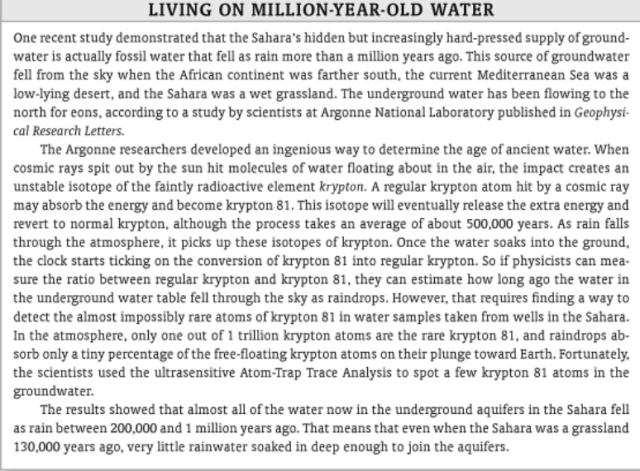Quote of the Day
The greatest of faults, I should say, is to be conscious of none.
— Thomas Carlyle, historian and philosopher
Introduction

Figure 1: The Sahara Desert is a the world's largest hot desert. (Source)
I was watching an episode called "Sahara" of the series "How the Earth Was Made" and they had a very good discussion of the history of the Sahara Desert and how it formed. During the presentation, they discussed how ground water can be found that is very old and very hot. I thought I would look into this a bit.
Background
Here is the video I was watching. I find this material interesting and I want to see if I can dig up some additional information.
http://www.youtube.com/watch?v=3B40SkM8cxE&w=640&h=360
Analysis
Water Temperature
At 38:40 in the video, they begin talking about the temperature of the water coming out of deep wells in the Sahara. They said that the temperature can be as high as 66 °C and is heated geothermally (see this blog post for more details). The geologist also mentions that the wells can be as deep as 0.75 mile (~1200 meters). Let's do some rough figuring.
- Except close to the surface, the ground temperature increases at ~25 °C for every 1000 meters (the number varies by location)
- Let's assume that the Sahara ground temperature starts off around 30 °C (I am using the Sahara's mean temperature for the initial ground temperature).
- Going down 1200 meters would mean that the ground temperature would increase over the surface temperature by
.
- I would expect the water temperature at 1200 meters down to be about 60 °C = 30 °C (surface temp) + 30 °C (geothermal temperature rise).
This is similar to what they said in the video.
As a boy, I used to work in fields that were irrigated. The water was cold. It came out of pumps that drew water from 60 meters underground. This also makes sense to me because the average temperature of our soil here is only about 10 °C. The Sahara does not have a cold winter and I would think their ground would never have an opportunity to get very cold.
Dating Water
The show talked about "ancient water" or "fossil water". How does one determine the age of water? Whenever I hear someone mention the age of a material, I usually start to think of some form of isotope dating. I quickly discovered that was the case here as well. I have discussed isotope dating methods before and the method is basically the same here (see the Appendix for details). The basic idea is simple.
- Cosmic rays strike the atmosphere and hit water molecules in the air creating Krypton-81.
- Some of this Krypton-81 dissolves in the rain that falls to the ground.
- Once on the ground, the rain begins its descent into the water table.
- The Krypton-81 has a half-life of 229,000 years. Scientists can sample the water from the Sahara aquifers and determine its age based on the amount of Krypton-81 it carries.
Note that while the approach is simple, measuring the tiny quantity of Krypton-81 atoms is not easy.
Conclusion
This is just a quick note to describe a science program on television that I found interesting. The idea that the Sahara has a massive amount of ancient water underneath it is amazing. I have always wondered why the pyramids were erected out in the desert. It appears that the area around the pyramids were not always a desert – even during the relatively recent time of man.
Appendix
Here is a link to a great description of using Krypton isotopes to date water. The original paper is available here. I will include a brief screenshot here (Figure 2) in case any of these references move.

